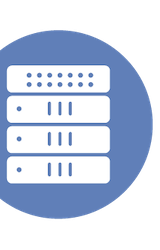James Green first got a look at Apstra back at Networking Field Day in 2016. The company offers an intent-based networking solution based on their Apstra Operating System. They’ll be presenting at VMworld next week, and James looks at their newly announced vSphere integration. This now allows for viewing the relationships between workloads, applications, tenants, and virtual networks,with specific interfaces, CPUs, and links, to all co-exist in the same graph representation.
Data In The Context of Digital Transformation
James Green got to get a close look at SolarWinds’ Pingdom Visitor Insights at Tech Field Day last month. In the past, James might have looked at this as a simple uptime monitor for websites. However after getting a closer look, he realizes that what Pingdom enables isn’t just data collection of uptime, but the contextual information to tie technical metrics to behavior.
DriveScale Releases Customer-Driven Advancements in Fall Edition of its SCI Platform
James Green inititally heard about DriveScale’s innovation with Software Composable Infrastructure and storage disaggregation at Tech Field Day in 2016. In this post, he reviews their “Fall Edition” update, which adds a new HDFS plugin, QuickCluster, and easier cluster scaling.
DriveScale Now Supports Kubernetes and Docker
DriveScale is all about disaggregating storage. James Green saw them at Tech Field Day a few years ago, and reviews their latest update. Their FlexVolume allows you to bring this same disaggregation to Docker and other containers in Kubernetes. James runs down the major features of the plugin in this post.
Cloud-Like Expenses with an On-Premises Experience
In this post, James Green outlines how ClearSky Data’s unique approach allows for cloud-like expenses but with an on-site experience for on-demand primary storage. James initially saw the company at Tech Field Day last year.
Microsoft Buys Storage Optimizer Avere Systems
James Green saw Avere Systems at Storage Field Day a few years ago, and has since done a great job reviewing the company’s Edge Filer portfolio. Now that the company has been acquired by Microsoft, James shares his thought how the company’s assets will fit into the Redmond giant’s overall offerings.
Still Backhauling All Internet-Bound Traffic To Your Data Center?
Many organizations depend on a hub-and-spoke model for performing enterprise-grade traffic inspections, but in this post James Green illustrates why this can prove insufficient for cloud first branch networks. He then highlights how a recent partnership between Riverbed and Zscaler allows for better overall WAN management and branch security. James originally saw this at Riverbed’s Tech Field Day presentation.
Moving Beyond Backups to Enterprise-Data-as-a-Service
James Green recently saw a presentation from Actifio at Tech Field Day late last year. In this post, they look over some case studies from the company. These highlighted how the company can not only provide effective disaster recovery as a service, but Enterprise Data as a service. This allowed a media organization to not just get piece of mind with data, but to better leverage it within an organization.
Avere Systems’ Latest Edge Filer Handles the Most Demanding Hybrid Cloud Workloads
James Green was first introduced to Avere Systems at Storage Field Day last year. In this piece, he looks at the company’s FXT 5850 edge filer. The FXT-series allows organizations to separate performance from capacity for hybrid and on-site workloads.
Spartans and Servers and Storage, Oh My!
James Green explores the IT lessons found in the legendary Battle of Thermopylae, bottlenecks can be a big deal. He uses this example of a serialized approach to combat to show why parallelism is important both in ancient combat and for I/O in the modern enterprise. A modern example of this is DataCore Software’s just released MaxParallel for SQL Server which parallelizes workloads to optimize them for multiple CPUs. It’s a really fun metaphor and a great read!
10 on Tech Episode 023 – Andrew Sullivan on Enabling Customers with Open Source
In this episode of the 10 on Tech podcast, James Green from ActualTechMedia interviews Andrew Sullivan and Brendan Wolfe of NetApp. They discuss why enterprise technology vendors invest in open source projects for the benefit of their customers, how strategic commitment from vendors to certain open source projects gives customers a sense of security, and NetApp’s “Trident” storage provisioner for Kubernetes.
Why Do Technology Vendors Invest In Open Source?
James Green looks at the motivations behind companies investing in open source projects. NetApp has made major strides in this over the past 18-months, and presented extensively on it at Tech Field Day.
More Isn’t Always Better
At Turbonomic’s Tech Field Day presentation, James Green was impressed by their focus and vision for how their application assurance solution should work. Instead of collecting metrics that simply generate noise, Turbonomic focuses only on those which effect application performance. Their monitoring is a byproduct rather than a feature in and of itself. He thinks this focus allows them to make their offering rather unique.
Container Hardening with Docker Bench for Security
Security for virtual machines has some well established protocols. But as containers continue to infiltrate the data center, what are the best security practices? Docker released a behemoth security documents, but at over 200 pages, not a lot of IT professionals have the time to ingest it in a timely fashion. Luckily, James Green wrote up a little walkthrough on how to run their “Docker Bench of Security” tool. This reviews your Docker configuration for common security holes, and is a must for any Docker deployments. James breaks down how to install, run, and interpret the tool and its findings.
Drive and Rack Scale Storage Architectures
Big data storage problems getting you down? Never fear! James Green put together a video highlighting two companies from last month’s Tech Field Day that are presenting solutions. Igneous offers an array of nanoservers equipped drives, making each network addressable. James also highlights DriveScale’s take on managing big data with their rack adapter to address a pool of JPOD storage. It’s a really great comparison between the two approaches!
The Container Storage Persistence Challenge
James Green published a great video summarizing the current state of persistent container storage. One of the more interesting offerings was presented at Tech Field Day this month by StorageOS, which runs on the application layer as a container itself. If you need to get up to speed on container storage, James made it easy with this video.
The Silent Threat of Dark Data
How much do you think about secondary storage? Probably not a ton. It’s all the data that’s not mission critical, the reams of backup data, archives, test/dev, and machine generated data that lives in separate silos. Cohesity demoed a holistic solution to deal with this mess, but why do you need it? James Green knows the answer: dark data. All that data that sits in storage, without metadata or context, data you don’t even know is there. Its a problem for any business that keep financial or medical records. All it takes is one malicious attack, and all that data you didn’t even know you had becomes a huge liability. Cohesity’s solution seems like a ray of light into this work. James breaks down how exactly they go about it.
10 on Tech Episode 013: J Metz on NVMe and NVMe-oF
10 on Tech Episode 013: J Metz on NVMe and NVMe-oF








